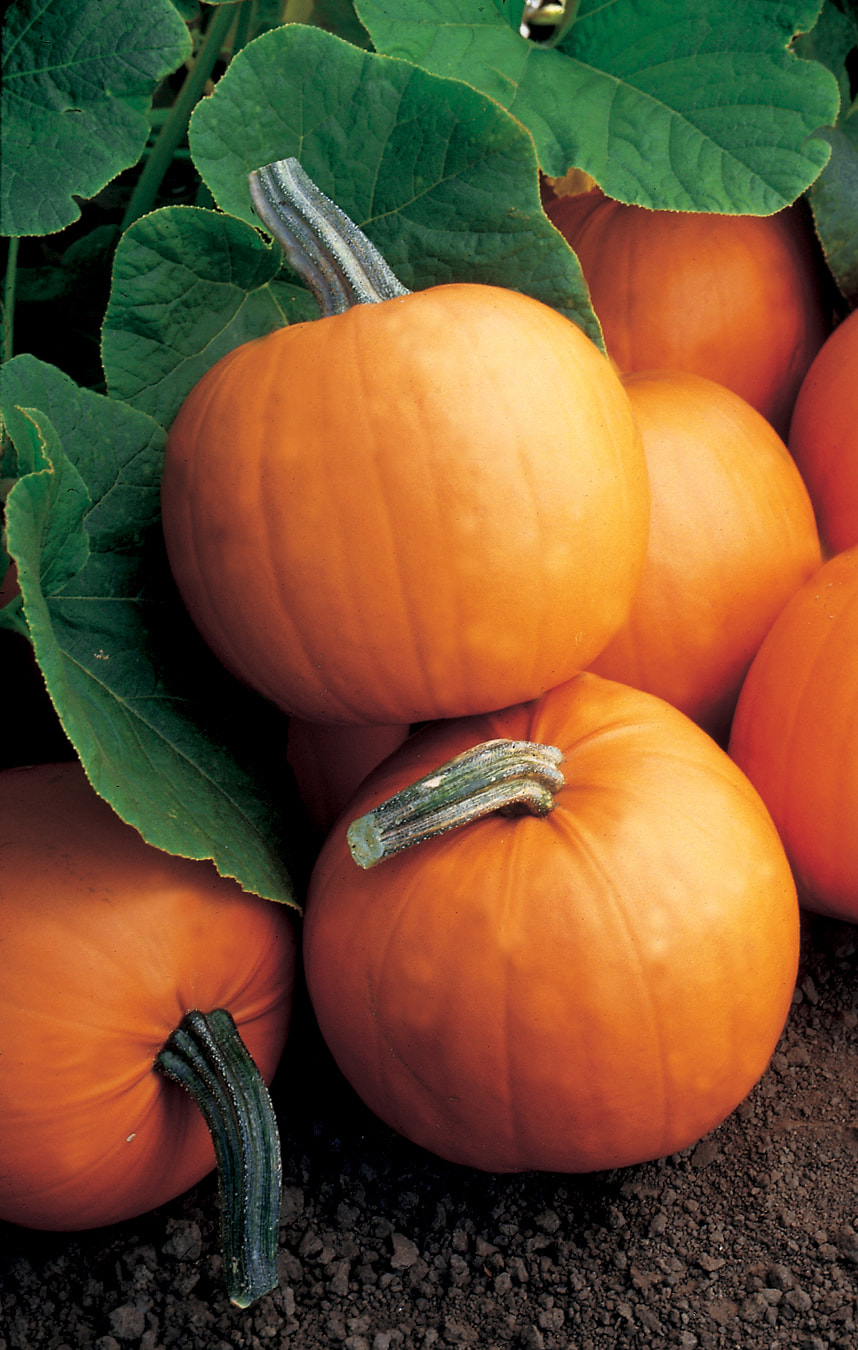by Melinda Myers
Pumpkin is not just for dessert. Consider using this low calorie, flavorful vegetable, botanically classified as a fruit, in any of the courses of your fall or holiday meals.
The beta carotene that gives pumpkin its orange color is an important antioxidant. Increasing the beta carotenes in your diet can reduce the risk of developing some cancers and provide protection against heart disease.
And do not throw the seeds in the compost pile, roast them instead and enjoy the anti-inflammatory benefits of this snack. Remove the pulp by rinsing the seeds in cold water. Spread the seeds in a single layer on a baking sheet treated with a non-stick cooking oil. Lightly salt. Bake at 325° for 25 minutes. Stir the seeds after 10 minutes. Allow to cool and store any leftovers, if there are any, in an airtight container.
Harvest pumpkins when the fruit is fully colored and the rind has lost its shine and is hard. The curly tendrils near the pumpkin will turn brown and die when the fruit is fully ripe. Use a pruning shear to cut the stem and avoid damage to the plant and your harvest. Leaving several inches of the pumpkin’s stem intact increases their storage life. And look for blemish-free fruit with intact stems when buying pumpkins from the grocery store or farmers’ market.
Always harvest pumpkins before the first frost. Or cover plantings with floating row covers, old sheets or blankets when frost is in the forecast. Protecting plants from the first few frosty nights can keep them growing until the remaining frost-free days of the season are back in the forecast.
Only store pumpkins free of soft spots, cuts and other damage that can lead to decay. Cleaning them before storing can help extend their shelf life. Wipe them down with a dilute solution of one tablespoon of bleach per gallon of water. Allow them to dry thoroughly before placing them in storage. Washing the fruit removes bacteria and fungal spores that can contribute to decay.
Store pumpkins in a dark, dry, cool location between 50 and 60 degrees for storage. Place them in a single layer on cardboard, crates or wooden shelves. Avoid storing them directly on a concrete floor that can lead to rot.
Check pumpkins regularly for rot and soft spots. Remove any that show signs of rot and add them to the compost pile. Pumpkins that are stored properly can last for several months.
Remember to take time this season to enjoy the harvest and flavor as you cook up some tasty, nutritious pumpkin dishes this fall.
Melinda Myers is the author of more than 20 gardening books, including Small Space Gardening. She hosts The Great Courses “How to Grow Anything” DVD series and the nationally-syndicated Melinda’s Garden Moment TV & radio program. Myers is a columnist and contributing editor for Birds & Blooms magazine and her web site is www.MelindaMyers.com.
Pumpkin is not just for dessert. Consider using this low calorie, flavorful vegetable, botanically classified as a fruit, in any of the courses of your fall or holiday meals.
The beta carotene that gives pumpkin its orange color is an important antioxidant. Increasing the beta carotenes in your diet can reduce the risk of developing some cancers and provide protection against heart disease.
And do not throw the seeds in the compost pile, roast them instead and enjoy the anti-inflammatory benefits of this snack. Remove the pulp by rinsing the seeds in cold water. Spread the seeds in a single layer on a baking sheet treated with a non-stick cooking oil. Lightly salt. Bake at 325° for 25 minutes. Stir the seeds after 10 minutes. Allow to cool and store any leftovers, if there are any, in an airtight container.
Harvest pumpkins when the fruit is fully colored and the rind has lost its shine and is hard. The curly tendrils near the pumpkin will turn brown and die when the fruit is fully ripe. Use a pruning shear to cut the stem and avoid damage to the plant and your harvest. Leaving several inches of the pumpkin’s stem intact increases their storage life. And look for blemish-free fruit with intact stems when buying pumpkins from the grocery store or farmers’ market.
Always harvest pumpkins before the first frost. Or cover plantings with floating row covers, old sheets or blankets when frost is in the forecast. Protecting plants from the first few frosty nights can keep them growing until the remaining frost-free days of the season are back in the forecast.
Only store pumpkins free of soft spots, cuts and other damage that can lead to decay. Cleaning them before storing can help extend their shelf life. Wipe them down with a dilute solution of one tablespoon of bleach per gallon of water. Allow them to dry thoroughly before placing them in storage. Washing the fruit removes bacteria and fungal spores that can contribute to decay.
Store pumpkins in a dark, dry, cool location between 50 and 60 degrees for storage. Place them in a single layer on cardboard, crates or wooden shelves. Avoid storing them directly on a concrete floor that can lead to rot.
Check pumpkins regularly for rot and soft spots. Remove any that show signs of rot and add them to the compost pile. Pumpkins that are stored properly can last for several months.
Remember to take time this season to enjoy the harvest and flavor as you cook up some tasty, nutritious pumpkin dishes this fall.
Melinda Myers is the author of more than 20 gardening books, including Small Space Gardening. She hosts The Great Courses “How to Grow Anything” DVD series and the nationally-syndicated Melinda’s Garden Moment TV & radio program. Myers is a columnist and contributing editor for Birds & Blooms magazine and her web site is www.MelindaMyers.com.

